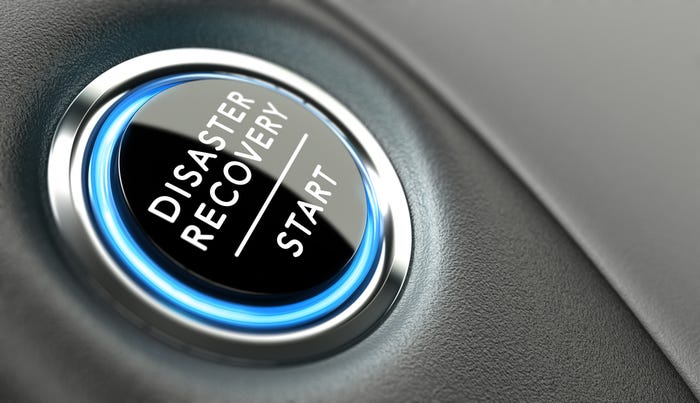5 Disaster Recovery Tips: Learning from Hurricanes
Hurricanes Irma and Harvey highlight the need for DR planning to ensure business continuity.
July 18, 2018

This has been an awful year for natural disasters, and yet, we’re not even midway through a hurricane season that’s been particularly devastating. Hurricanes Irma and Harvey, and the flooding that ensued, has resulted in loss of life, extensive property damage, and crippled infrastructure..
Naturally, businesses have also been impacted. When it comes to applications, data and data centers, this is a wake-up call. At the same time, these are situations that motivate companies and individuals to introduce much-needed change. With this in mind, I’ll offer five tips any IT organization can use to become more resilient against natural disaster, no matter the characteristics of their systems and data centers. This can lead to better availability of critical data and tools when disaster strikes, continuity in serving customers, as well as peace of mind knowing preparations have been made and work can continue as expected.
1. Keep your people safe
When a natural disaster is anticipated (if there is notice), IT staffers need to focus on personal and family safety issues. Having to work late to take one more backup off-site shouldn’t be part of the last-minute process. Simply put, no data is worth putting lives at risk. If the rest of these tips are followed, IT staff won’t have to scramble in the heavy push of preparation to tie up loose ends of what already should be a resilient IT strategy.
2. Follow the 3-2-1 rule
In my role, I’ve long advocated the 3-2-1 rule, and we need to keep reiterating it: Have three different copies of important data saved, on two different media, one of these being off-site. Embrace this rule if you haven’t already. There are two additional key benefits of the 3-2-1 rule: It doesn’t require any specific technology and can address nearly any failure scenario.

disaster recovery.jpg
3. 10 miles may not be enough
My third tip pertains to the off-site recommendation above. Many organizations believe the off-site copy or disaster recovery facility should be at least 10 miles away. This no longer may be sufficient; the path and fallout of a hurricane can be wide-reaching. Moreover, you want to avoid having personnel spend unnecessary time in a car traveling to complete the IT work. Cloud technologies can provide a more efficient and safer solution. This can involve using disaster recovery as a service (DRaaS) from a service provider or simply putting backups in the cloud.
4. Test your DR plan
Ensure that when a disaster plan is created there is particular focus on anticipating and eliminating surprises. This should involve regularly testing of backups to be certain they are completely recoverable, that the plan will function as expected and all data is where it needs to be (off-site, for example). The last thing you want during a disaster is to find that the plan hasn’t been completely implemented or run in months, or worse, discover there are workloads which are not recoverable.
5. Communications planning
My final recommendation is to work backwards in all required systems and with providers of all types to ensure you don’t have risks you can’t fix. Pay close attention to geography in relation to your own facilities, as well as country locations for data sovereignty considerations. This can apply to telecommunications providers, too. A critical component about response to any disaster is that organizations are able to communicate. Given what has happened in some locations in the path of Hurricane Irma, even cellular communication can be unreliable. Consider developing a plan to ensure communications in the interim if key business systems are down.
The recent flood and hurricane damage has been significant. The truth is, when it comes to the data, IT services, and more, there is a significant risk a business may never recover if it's not adequately prepared. We live in a digitally transformed world and many businesses can’t operate without the availability of systems and data. These simple tips can bring about the resiliency companies need to effectively handle disasters, and prove their reliability to the customers they serve.
Rick Vanover is director of technical product marketing for Veeam Software.
About the Author
You May Also Like




